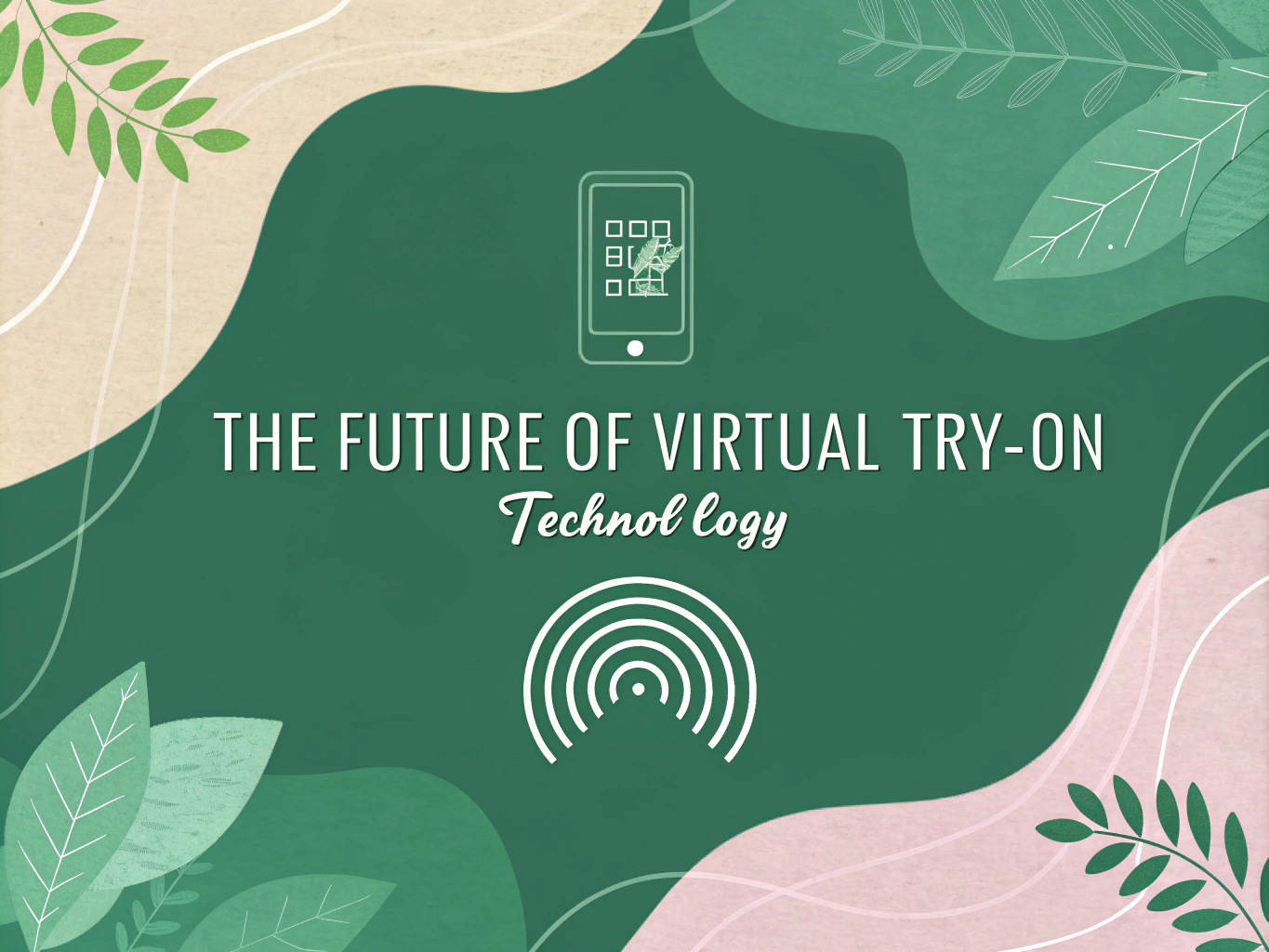Virtual try on clothes technology is revolutionizing how we shop online, combining artificial intelligence, augmented reality, and machine learning to create immersive digital fitting rooms.
This innovative approach allows shoppers to visualize how garments will look on their bodies without physically trying them on, marking a significant shift in the e-commerce landscape.
For those wondering “what does VTO mean” in the context of fashion technology, it stands for Virtual Try-On, a sophisticated system that creates realistic simulations of clothing on your body.
This technology addresses one of online shopping’s biggest challenges: uncertainty about fit and appearance.
How Digital Fitting Rooms Work
Modern virtual try on clothes platforms use your device’s camera to capture your measurements and create a digital avatar. The system processes this information in real-time, mapping selected virtual outfits onto your body with remarkable accuracy. Advanced AI algorithms ensure that fabric drapes naturally and adjusts as you move.
The technology behind these systems involves several key components:
- Body tracking sensors that capture precise measurements
- 3D modeling software that renders garments accurately
- Machine learning algorithms that adjust clothing fit
- Real-time processing systems for smooth visualization
The Evolution of Virtual Try-On Solutions

Major retailers are rapidly adopting virtual try on clothes technology to enhance customer experience. Walmart’s “Be Your Own Model” feature lets customers virtually try on clothes using their own photos, while Amazon’s Virtual Try-On technology focuses on accessories and shoes. These implementations demonstrate how clothing technology continues to advance.
Technical Innovation in Digital Fitting
The ability to try on clothes virtually requires sophisticated technical architecture. Modern systems use body tracking technology to create accurate measurements, while 3D modeling processes ensure realistic garment representation.
Real-time adjustments account for different body types and movements, providing a seamless experience as you explore various clothing options.
When you virtually try on clothes, the system processes multiple data points simultaneously:
- Body measurements and proportions
- Fabric physics and behavior
- Lighting and shadow effects
- Color and texture rendering
User Experience Considerations
The success of virtual clothing try-on platforms depends heavily on user experience. Leading solutions prioritize intuitive interfaces, quick loading times, and realistic visualizations. They also incorporate features like 360-degree views and the ability to compare multiple outfits side by side, making it easier than ever to try on clothes from the comfort of your home.
As virtual try on technology continues to evolve, we’re seeing increasingly sophisticated implementations that blur the line between physical and digital shopping experiences. These advancements are particularly valuable for consumers who want to explore fashion options efficiently while maintaining confidence in their purchasing decisions.
Leading Virtual Try-On Platforms Transforming Online Shopping
Major retailers have embraced virtual try-on technology to enhance the digital shopping experience. Walmart’s “Be Your Own Model” feature lets shoppers upload photos to try clothes on virtually, while Amazon’s Virtual Try-On technology focuses on accessories and shoes. These platforms showcase how virtual outfits are becoming a standard in online shopping.
Google’s AI-powered virtual fitting room represents another breakthrough in clothing technology. The system analyzes thousands of product images to create realistic try-on visualizations across diverse body types and poses. This advancement in virtual try-on clothes capability demonstrates how rapidly the technology is evolving. Learn more about this transformation.
Independent Virtual Fashion Platforms
Several innovative companies focus exclusively on virtual try-on solutions. Style.me offers a comprehensive 3D virtual fitting room that creates personalized avatars based on shoppers’ measurements. The platform enables customers to try on clothes virtually with remarkable accuracy.
TryOnAI has developed sophisticated algorithms that allow real-time clothing visualization through standard webcams. Their technology processes body tracking data to realistically drape virtual garments on users’ bodies. Meanwhile, Wardrobe-AI.com employs automatic detection systems to streamline the virtual try-on process.
Technical Architecture Behind Virtual Try-On Systems

The foundation of virtual try on clothes platforms relies on three core technologies working in harmony:
- Augmented Reality (AR) frameworks for real-world overlay
- Machine Learning (ML) models for body tracking and measurements
- 3D graphics engines for realistic garment rendering
These systems process real-time video feeds to identify body landmarks and create accurate digital representations. Advanced algorithms then map clothing items onto the user’s form, adjusting for movement and maintaining realistic draping effects.
Processing and Performance Optimization
Successful virtual try-on implementation requires careful attention to system performance. Real-time processing demands significant computational resources, especially when handling high-resolution video feeds and complex 3D models. Developers must optimize code and utilize efficient rendering techniques to maintain smooth performance across devices. Explore the future of apparel.
User Experience and Interface Considerations
Creating an intuitive virtual try-on experience requires thoughtful interface design. The customer journey typically begins with body measurement capture, either through photo upload or real-time scanning. Users can then browse and select items to try on virtually, with the system providing immediate visual feedback.
Personalization features enhance the experience by remembering user preferences and measurements. Smart algorithms can suggest sizes based on previous try-ons and provide fit recommendations across different brands. This level of customization helps build user confidence in virtual fitting results.
Impact on Return Rates
Retailers implementing virtual try on clothes technology report significant reductions in return rates. When shoppers can visualize how items will look before purchase, they make more informed decisions. Data shows that virtual try-on capability can reduce returns by up to 40% while increasing conversion rates by 25%.
For example, major fashion retailers using virtual try-on solutions have seen average return rates drop from 30% to 18% within six months of implementation. This improvement directly impacts bottom-line results while enhancing customer satisfaction and reducing environmental impact from reverse logistics.
The Future of Virtual Try-On Technology

As virtual try on clothes technology continues to evolve, we’re seeing remarkable advancements in how retailers implement these solutions.
Major players like Amazon, Walmart, and Google are investing heavily in virtual try-on capabilities, setting new standards for what’s possible in digital fitting rooms.
Emerging Trends in Clothing Technology
The integration of artificial intelligence and machine learning is revolutionizing how customers try on clothes virtually. Advanced body scanning algorithms now offer unprecedented accuracy in size recommendations, while real-time rendering provides seamless visualization of garments on different body types.
Key developments include:
- 3D modeling improvements for fabric physics simulation
- Enhanced AR capabilities for mobile devices
- Integration with social commerce platforms
- Advanced personalization through AI-driven recommendations
Implementing Virtual Try-On Solutions
For retailers considering virtual try on clothes technology, the implementation process requires careful planning and consideration. Success depends on choosing the right platform and ensuring seamless integration with existing e-commerce systems. Whether you opt for solutions like Style.me or develop custom implementations, focus on user experience and technical performance. Discover how it’s revolutionizing shopping.
Best Practices for Virtual Fitting Rooms
To maximize the effectiveness of your virtual try-on solution, consider these essential practices:
- Regular calibration of sizing algorithms
- Continuous user feedback collection
- Mobile-first design approach
- Regular updates to clothing catalogs
Measuring Success and ROI
When implementing virtual try-on technology, tracking key performance indicators is crucial. Retailers report significant improvements in conversion rates and reductions in return rates after implementing VTO solutions. Some companies have seen return rates drop by up to 40% while experiencing a 20% increase in sales conversion.
Future Outlook and Opportunities
The future of virtual try on clothes technology looks promising, with new innovations emerging regularly. From enhanced body measurement capabilities to integration with metaverse platforms, the possibilities continue to expand. As more retailers adopt these solutions, we can expect to see continued improvements in accuracy and user experience.
Key areas to watch include:
- Integration with social shopping platforms
- Advanced fabric simulation technology
- Improved mobile AR capabilities
- Enhanced personalization features
Conclusion
Virtual try-on technology represents a significant leap forward in online shopping experiences. As the technology continues to mature, retailers who embrace these innovations position themselves at the forefront of e-commerce evolution. Whether you’re just starting to explore virtual try-on solutions or looking to upgrade existing implementations, the key lies in choosing the right technology partners and maintaining a strong focus on user experience. Explore more about technology partners.
Ready to transform your online shopping experience? Consider implementing virtual try-on technology today and join the growing number of retailers revolutionizing the digital shopping landscape. The future of fashion retail is here, and it’s more accessible than ever before. Learn how to get started.
Check out ProductScope AI Clothes Remover/a> (get 200 free studio credits)
FAQs
What is virtual try-on clothes?
Virtual try-on clothes technology enables shoppers to try on clothes to check for size, fit, or style, virtually rather than physically, using augmented reality and AI.
What does virtual try-on mean?
Virtual try-on refers to a digital experience where shoppers can visualize how clothing, accessories, or other items will look on their bodies without physically trying them on.
What fashion brand has virtual try-on?
Brands like Walmart, Amazon, and Gucci offer virtual try-on solutions, allowing customers to try clothes on virtually through their platforms.
Can I try on clothes online?
Yes, virtual outfits can be tried on online using virtual try-on technology provided by various retailers and apps.
